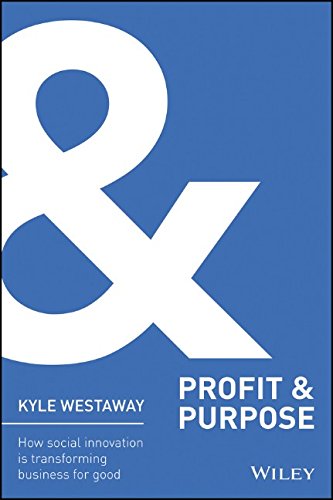“Where’s the data proving that the pursuit of profit and purpose can go together?” Let’s take a look at some good data that can help us answer that question.
In his’ book Firms Of Endearment, Raj Sisodia presents research on companies that embrace a multi-stakeholder approach to management. He selected 28 “Firms of Endearment”—18 publicly traded and 10 private companies—purely on the criteria that they have embraced stakeholder value as their’ guiding principle for business strategy.

Like most of us, Sisodia’s expectations for the financial performance of these companies were measured. It seems logical that a company will have to operate at slimmer margins if it wants to pay employees well, provide good healthcare, invest m’ the community, and operate in an environmentally friendly manner. But the findings of his study show otherwise.
Not only do the Firms of Endearment do social good, they also make their investors very happy. Between 1996 and 2011 the Firms of Endearment had a 20 percent annualized return on investment, as opposed to the S&P 500 that offered a 6.5 percent annualized return on investment in the same period. Firms of Endearment also weathered the financial crisis much better than the S&P 500. So not only do the Firms of Endearment provide a better financial return, they also tend to be more resilient.
A 2014 study from the University of Northampton and the law firm Bates Wells Braithwaite also shows that social enterprises have more longevity than traditional private firms. It looks at survival rates of the top 100 social ventures in comparison with the FTSE—the top 100 companies by market capitalization on the London Stock Exchange—over a 30-year time frame, from 1984 to 2014. The results of the study showed that social enterprises were slightly more likely to survive in the top list—41 percent of these social enterprises have endured, compared with 33 percent of the FTSE in that 30-year period.
There is some additional good evidence of the power of combing purpose with the pursuit of profit. An organization called Ethisphere has been measuring the ethical score of companies based on seven criteria: (1) strong internal ethical and compliance standards; (2) legal, regulatory, and reputational risk; (3) internal leadership; (4) industry leadership; (5) innovation contributing to the public wellbeing; (6) corporate citizenship and responsibility; and (7) corporate governance. The bottom line they’ve revealed is that high scorers tend to perform well financially. In 2011, 110 companies were identified as fitting the criteria, and the average of those companies’ earnings outperformed the S&P 500 by 7.3 percent that year. They also enjoy higher brand reputation, higher customer loyalty, and lower turnover.
Finally, Daniel Pink in his book Drive attempts to answer the question of what motivates us to work. The research he cites shows that money matters to the extent that an employee feels like they are not taken advantage of, but once he or she is paid at a relatively fair wage, the primary motivations shift. He argues that there are three primary motivations to work: autonomy, mastery, and purpose.
Autonomy is the ability to self-direct activities, not being micro-managed. Mastery is having the right amount of challenge to grow skills. Purpose is an ideal that the whole organization is working toward that transcends the pursuit of profit.
Social enterprises are the ideal place for autonomy, mastery, and purpose to flourish. Pink suggests that by engaging employees on all of these levels, they will work harder, be happier, and stay more engaged. If employees are happy, engaged, and working hard, it seems logical that a company will function in a healthy way internally as well as creating more inspired products and serving customers better. Such a company certainly seems like it would be a great place to work. Is it any surprise that financial performance would follow?
Fortune posts a list of the 100 best places to work every year, and that list consistently outperforms the S&P 500, with an annualized return of 10.81 percent as opposed to 4.49 percent for the S&P500 from the years of 1997 to 2012. The cumulative stock market returns for the top 100 performed 366 percent higher than the S&P 500 over the same time frame.
So the data seem to show that social enterprises perform very well. It’s difficult to point to one exact reason for financial performance. There are multiple factors at play in any single organization’s financial performance. But one clear advantage is that an organization that has a more compelling story will need to spend less on marketing, and social enterprises, by definition, have a powerful fundamental message. An organization that has a stronger culture of innovation and collaboration will create better products that customers will love. An organization that treats customers with compassion and dignity will win their loyalty.
[This is an excerpt from Profit & Purpose by Kyle Westaway]